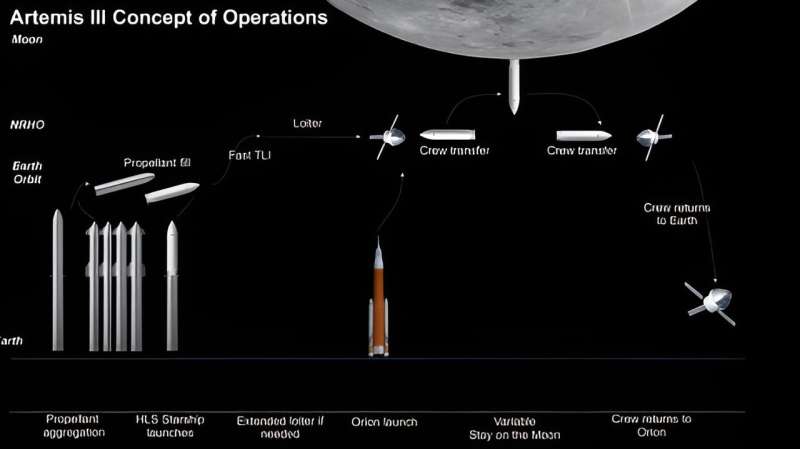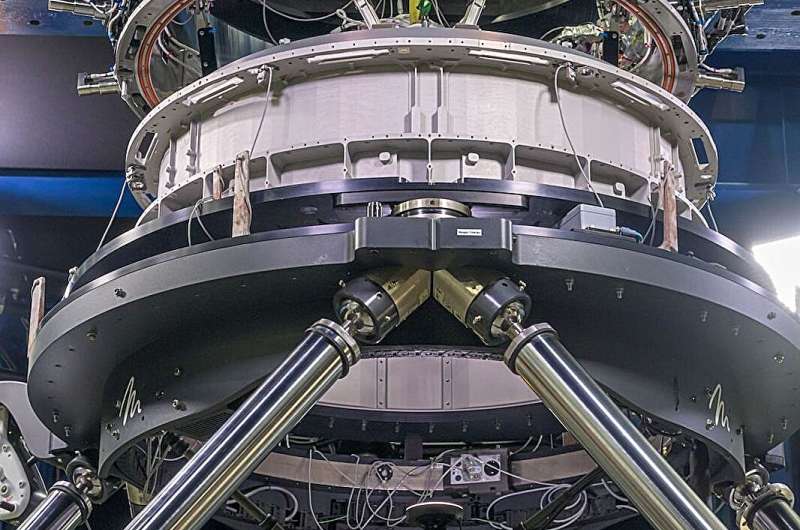The Apollo Program delivered 12 American astronauts to the surface of the moon. But that program ended in 1972, and since then, no human beings have visited. But Artemis will change that. And instead of just visiting the moon, Artemis' aim is to establish a longer-term presence on the moon. That requires more complexity than Apollo did. Astronauts will need to transfer between vehicles.
All of that activity requires a reliable spacecraft docking system.
When Artemis astronauts blast off from Earth, they'll be in the four-seat Orion spacecraft. Orion will take them to lunar orbit, where two will transfer into the Starship HLS, and two will remain in Orion. Starship HLS will deliver them to the lunar surface. In the future, the Lunar Gateway will be in orbit around the moon, and astronauts will move from Orion to the Gateway to the Starship HLS.
These transfers are complicated and risky maneuvers. The docking system that will make this work is called SpaceX's Starship HLS docking system. It's based on SpaceX's successful Dragon 2 docking system. The Dragon 2 system allows the Dragon 2 spacecraft to dock with the ISS so crew and equipment can be transferred. It's been in use since 2020.
NASA and SpaceX are busy testing the new Starship HLS docking system. They recently completed 10 days of testing at the Johnson Space Center in Houston, Texas. They conducted more than 200 different docking scenarios involving different speeds and angles. The results from this full-scale testing will feed into ongoing computer models of the system, which will, in turn, feed into future testing and design.

The system has both an active and a passive mode. When two spacecraft dock, one is active, and the other is passive. The active one is called the chaser, and the other is the target.
During this round of tests, NASA and SpaceX demonstrated the soft capture procedure. In passive capture, the chaser extends its soft capture system (SCS) while the target spacecraft's system remains retracted. The chaser does all the work, employing latches and other mechanisms to grab the target spacecraft and complete the docking.
HLS requirements state that there must be redundancy in crew egress/ingress. The soft capture procedure seems to address this if the docking system works while one docking system remains retracted.
This is just the latest round of tests. SpaceX has already reached a series of important milestones for the Starship HLS. Those milestones involved power generation, communications, guidance and navigation, propulsion, life support, and space environments protection.
While watching powerful rockets being tested and launched takes up a lot of attention, there's far more to successful missions than just launch vehicles. According to NASA, "the Human Landing System program is at the center of Artemis, designed to yield groundbreaking science, develop and utilize lunar surface resources and leverage what we learn at the moon for future Mars missions." Docking systems might not garner much attention, but they're obviously a critical part of success.
Through that lens, any progress on Artemis is good news because, on other fronts, the news is not always good. Artemis was initially scheduled to launch in 2025. But it'll be at least a year late, and NASA says that SpaceX will need to perform more launches before the Artemis mission is given the go-ahead.
Provided by Universe Today



